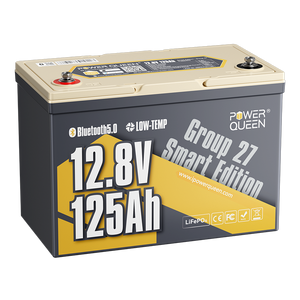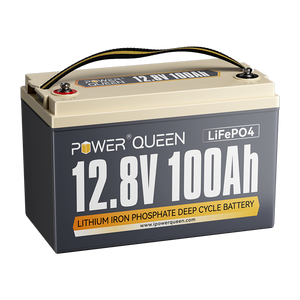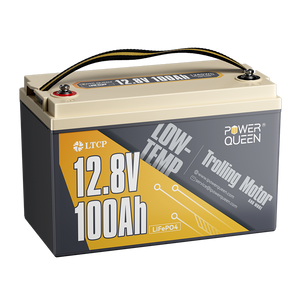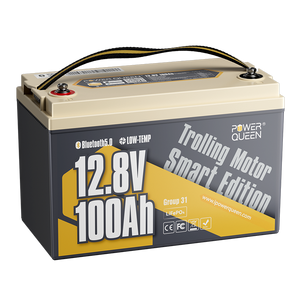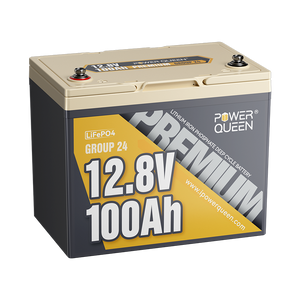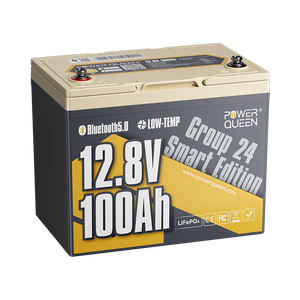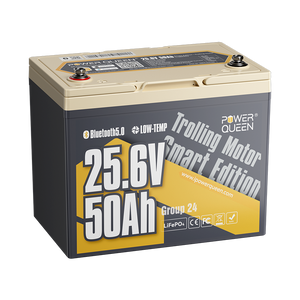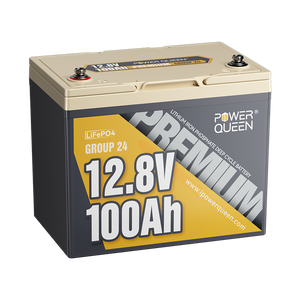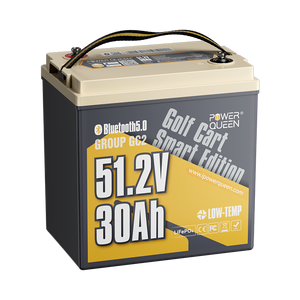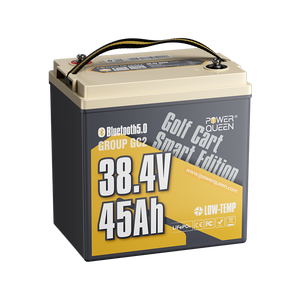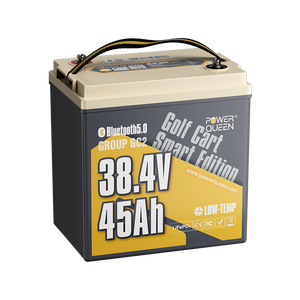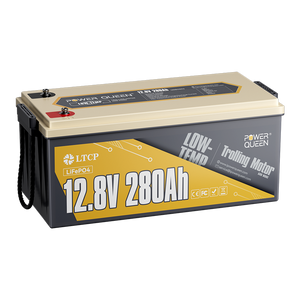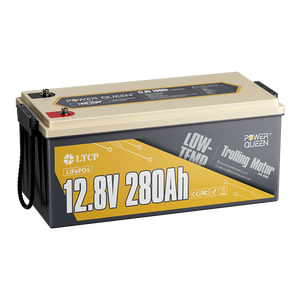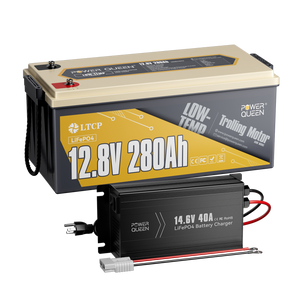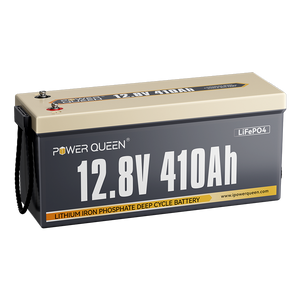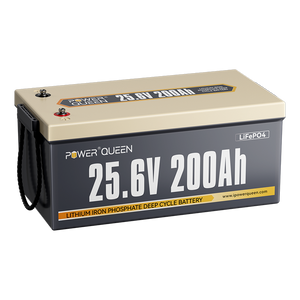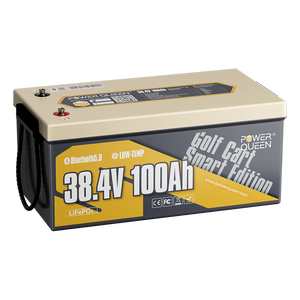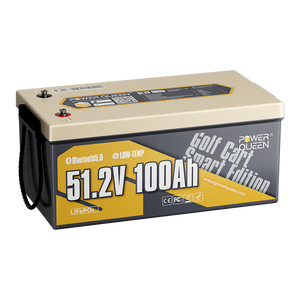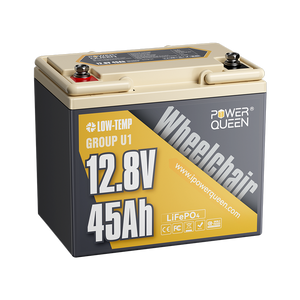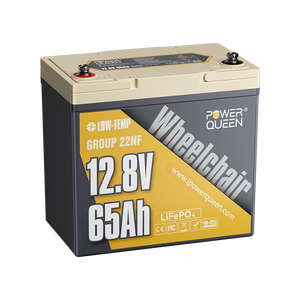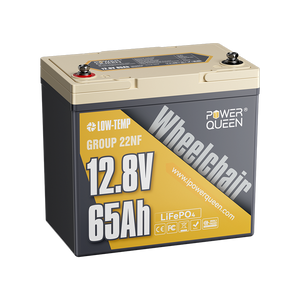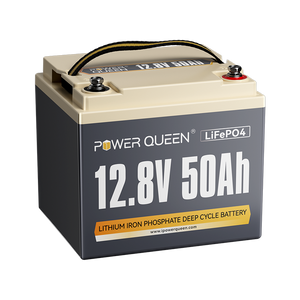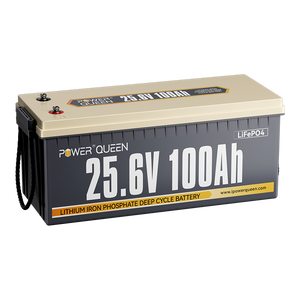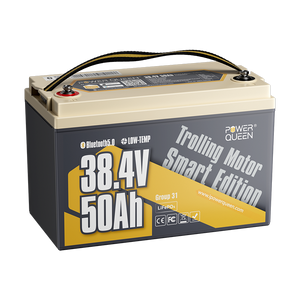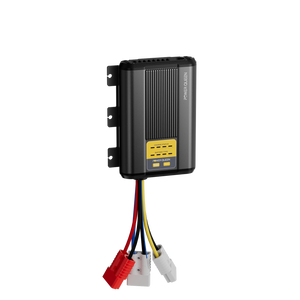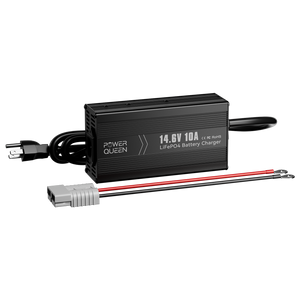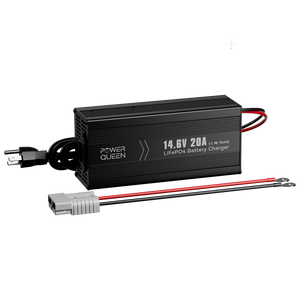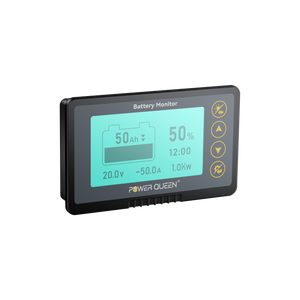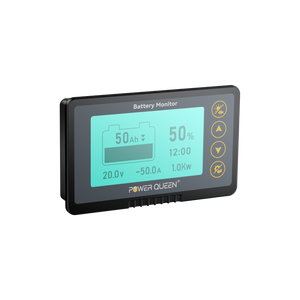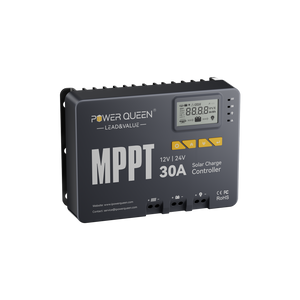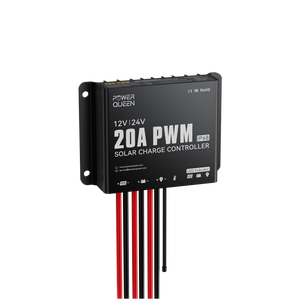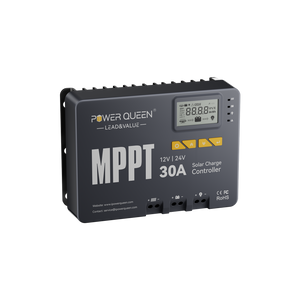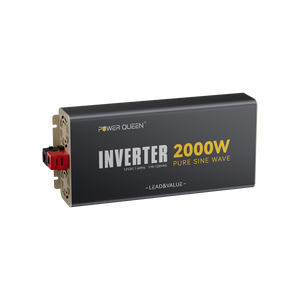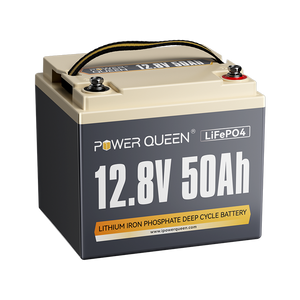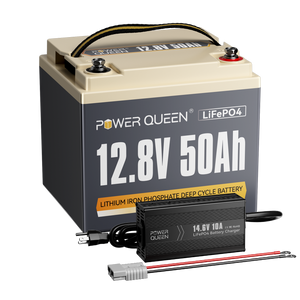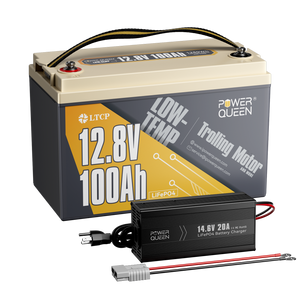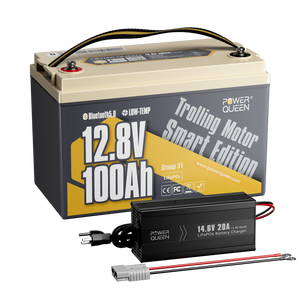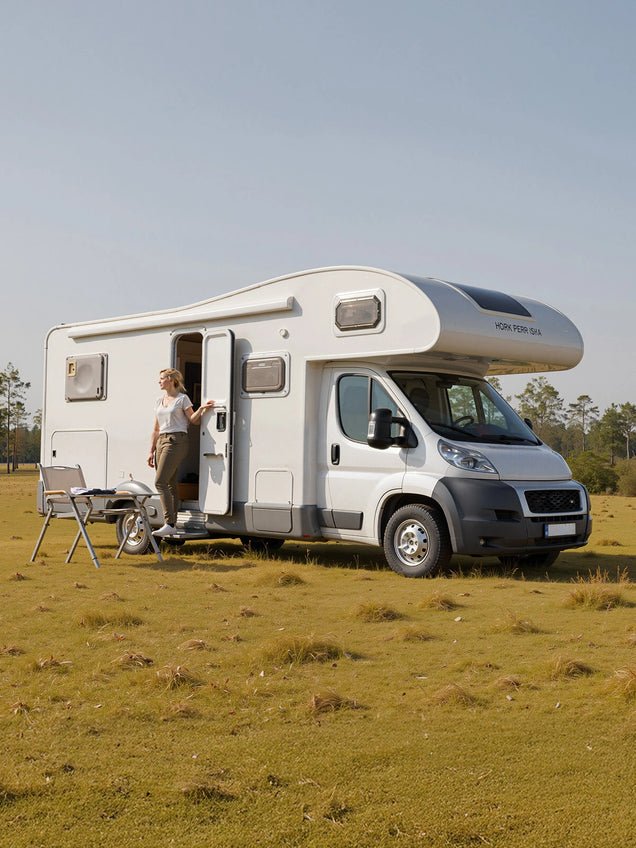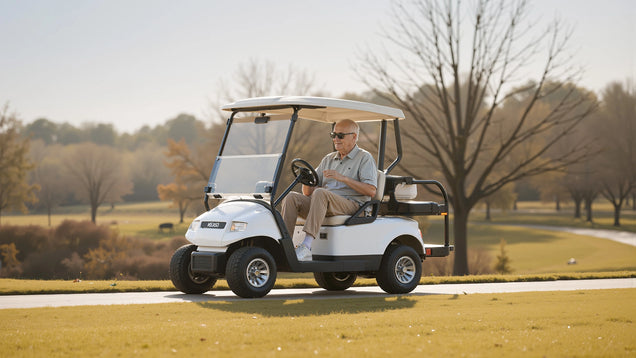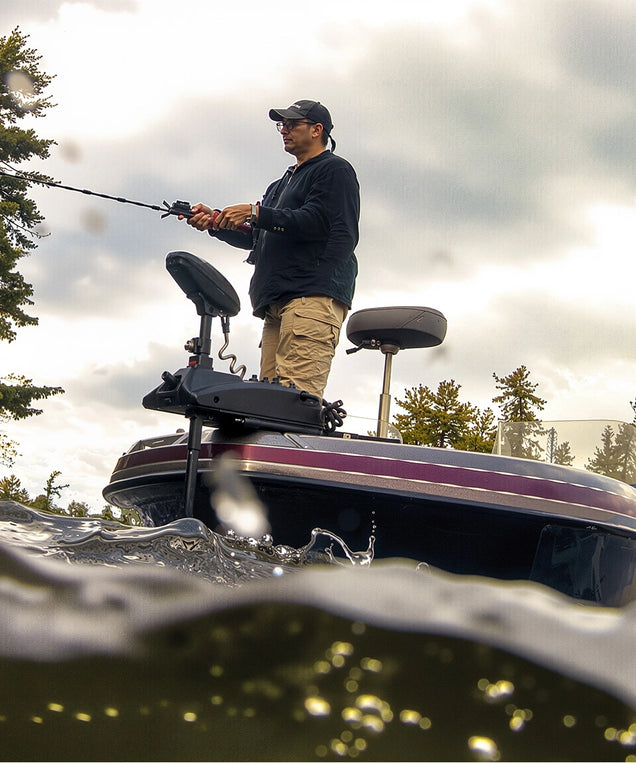How Long Do ATV Batteries Last? Tips for Extending Their Lifespan
All-terrain vehicles (ATVs) are a favorite among outdoor enthusiasts for their versatility and thrill in off-road adventures. However, like any vehicle, ATVs need regular maintenance to keep them running smoothly.
One key aspect of maintenance is understanding the lifespan of the ATV battery, which often raises questions. This article will discuss the factors that affect an ATV battery’s lifespan and offer tips to help extend its life.
Table of Content
- Part 1. Understanding the Lifespan of an ATV Battery
- Part 2. What Kind of Battery Does an ATV Use?
- 2.1 Flooded Battery
- 2.2 AGM Battery
- 2.3 Lithium Iron Phosphate Battery
- 2.4 Why Lithium-Ion Batteries are a Better Choice for ATVs
- Part 3. Lithium 48V ATV Battery Recommended
- Part 4. How to Charge ATV Batteries
- Part 5. 5 Ways to Charge ATV Batteries
- 5.1 Using a Battery Charger
- 5.2 Using a Trickle Charger
- 5.3 Using a Solar Charger
- 5.4 Using a Jump Starter
- 5.5 Using an Alternator
- Part 6. Tips to Make Your ATV Battery Last Longer
- Part 7. Conclusion
Part 1. Understanding the Lifespan of an ATV Battery
The lifespan of an ATV battery depends on various factors such as usage, maintenance, and environmental conditions. Typically, an ATV battery lasts between 2 to 5 years, though this can vary based on how well the ATV is used and maintained.
Part 2. What Kind of Battery Does an ATV Use?
All-Terrain Vehicles (ATVs) can be powered by various types of batteries, including flooded lead-acid, AGM (Absorbent Glass Mat), and lithium-ion batteries, each with its own set of pros and cons.
2.1 Flooded Battery
Conventional flooded lead-acid ATV batteries usually last 2 to 3 years, but with proper maintenance and ideal conditions, their lifespan can extend to 4 to 5 years. However, they tend to have a shorter lifespan compared to sealed batteries due to their lower resilience against environmental challenges. Additionally, these batteries have a relatively high discharge rate, losing about 13% of their charge each month.
Characteristics:
- Least expensive among the three battery types
- Shortest lifespan of the three
- Requires topping off with distilled or deionized water as it's not completely sealed
- High self-discharge rate during storage
- Comes with a 6-month warranty
2.2 AGM Battery
AGM (Absorbed Glass Mat) batteries are currently the most common type used in ATVs. They generally last 3 to 5 years, but with proper maintenance, they can extend to 6 to 8 years. Unlike flooded batteries, AGM batteries don't fail abruptly; instead, they gradually lose capacity over time, requiring more frequent charging or eventual replacement.
Characteristics:
- Slightly more expensive than flooded batteries
- Lasts 2-3 times longer than flooded batteries
- Completely sealed and maintenance-free
- Slower discharge rate in storage compared to flooded batteries
- Charges faster than flooded batteries
- Resistant to vibrations and extreme temperatures
- Comes with a 12-24 month warranty
2.3 Lithium Iron Phosphate Battery
Lithium-ion batteries are less commonly used in ATVs due to their higher cost and reduced performance in cold weather. While lead-acid batteries can typically handle 500 to 1,000 charge cycles under ideal conditions, lithium-ion batteries can last between 2,000 and 5,000 cycles. Advanced lithium batteries, such as Power Queen, can offer 4,000 to 15,000 cycles depending on the depth of discharge (DOD). These batteries also have a low discharge rate of only 1% to 3% per month, which contributes to their extended lifespan.

Power Queen 48V 100Ah Golf Cart Smart Deep Cycle Lithium Battery
Characteristics:
- Most expensive option
- Lasts 3-4 times longer than flooded batteries, with lifespans up to 2000 cycles. Advanced lithium batteries like Power Queen can last up to 4000-15000 cycles.
- Completely sealed and maintenance-free
- Lowest self-discharge rate
- Fastest charging capability
- Resistant to vibrations and extreme heat
- Lightweight with consistent discharge power
- Comes with a 5-year warranty
The lifespan of ATV batteries varies by type. Flooded lead-acid batteries typically last 2 to 3 years, AGM batteries 3 to 5 years, and lithium iron phosphate batteries up to 8 to 10 years. Factors such as storage conditions, maintenance, and climate can significantly affect battery longevity.
2.4 Why Lithium-Ion Batteries are a Better Choice for ATVs
Lithium-ion batteries are gaining popularity as the preferred choice for ATVs due to several advantages. They offer a higher energy density, providing the same power with less weight and size compared to lead-acid or AGM batteries. This reduction in overall weight enhances the ATV's performance and handling.
Moreover, lithium-ion batteries have a longer lifespan, require less maintenance, and deliver consistent power even under varying loads and temperatures. These qualities make them an ideal option for those seeking improved performance and reliability in their ATVs.
Part 3. Lithium 48V ATV Battery Recommended
In a market saturated with options like flooded lead-acid and AGM batteries, lithium batteries consistently emerge as the top choice. Among lithium batteries, our products shine due to their exceptional performance, advanced technology, and reliable operation.
Part 4. How to Charge ATV Batteries
To charge ATV batteries properly, the fist thing is to meet the voltage requirement.
4.1 Voltage System in All-Terrain Vehicles (ATVs)
Most ATVs, commonly known as four-wheelers, traditionally operate on a 12-volt electrical system. This 12-volt setup powers various components within the ATV, including the ignition, lights, and other accessories, and is the standard voltage system used in many small to medium-sized vehicles, such as cars, motorcycles, and recreational vehicles.
However, with the rise of electric ATVs, there is now a wider range of voltage systems available. Electric ATVs can feature higher voltage configurations, such as 48 volts, 72 volts, or even more, depending on the specific model and its intended use.
These higher voltage systems are typically found in electric or hybrid ATVs, designed to provide increased power and performance.
Part 5. 5 Ways to Charge ATV Batteries
Charging an ATV (All-Terrain Vehicle) battery is a relatively straightforward process. Here are some common ways to charge ATV batteries:
5.1 Using a Battery Charger
To charge an ATV battery, follow these steps using a battery charger:
- Disconnect the battery from the ATV.
- Attach the positive (red) clamp of the charger to the positive terminal on the battery and the negative (black) clamp to the negative terminal.
- Plug in the charger and adjust it to the appropriate settings for your battery type (refer to the charger's manual).
- Allow the battery to charge fully. Once charging is complete, disconnect the charger and reconnect the battery to the ATV.
Tips: For AC-DC chargers, ensure they match the battery's voltage requirements. If you are using lithium batteries, it is recommended to use a LiFePO4 lithium battery charger to ensure a full charge.

Related reading: Can I Charge a Lifepo4 Battery With a Lead Acid Charger?
5.2 Using a Trickle Charger
A trickle charger is designed to charge a battery slowly over an extended period, making it ideal for maintaining the battery's charge during storage. Use it in the same manner as outlined above.
Note: Trickle chargers are suitable only for lead-acid batteries. Lithium batteries do not require a trickle charger.
5.3 Using a Solar Charger
If you have access to sunlight, you can use a solar charger to charge your ATV battery. These chargers convert solar energy into electricity to power the battery. Make sure the solar panel is exposed to sufficient sunlight for effective charging.
Additionally, to ensure battery safety, it's essential to use a solar charge controller.
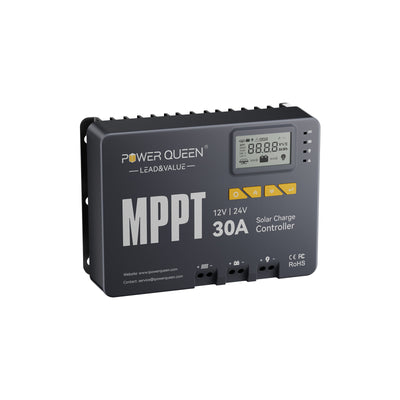

5.4 Using a Jump Starter
If your ATV battery is fully drained, a jump starter can provide the initial boost needed to start the ATV. Once the ATV is running, the alternator will take over and recharge the battery.
5.5 Using an Alternator
Although not a direct charging method, riding the ATV can help recharge the battery since the alternator generates electricity while the engine is running.
Always follow the manufacturer's instructions for charging your ATV battery and take appropriate safety precautions to prevent accidents or damage.
Part 6. Tips to Make Your ATV Battery Last Longer
ATV (All-Terrain Vehicle) batteries, like all vehicle batteries, need proper care and maintenance to ensure they last longer and perform reliably. Here are some tips to extend the life of your ATV battery:
Keep It Charged: For lead-acid batteries, commonly used in ATVs, it's important to keep them charged. Allowing the battery to fully discharge and remain so can lead to sulfation, which significantly shortens its lifespan.
Maintain Proper Water Levels: If your ATV battery requires maintenance, ensure the water level is correct. Use only distilled water to top off the cells, as tap water can introduce minerals that may damage the battery.
Regular Use: Batteries benefit from regular use, which helps prevent the buildup of lead sulfate crystals on the plates. If you won't be using your ATV for an extended period, consider using a battery maintainer to keep it charged.
Proper Storage: When storing your ATV for the off-season, remove the battery and keep it in a cool, dry place. Avoid extreme temperatures, as both heat and cold can damage the battery.
Use a Smart Charger: Charge your ATV battery with a smart charger that prevents overcharging. Overcharging can generate excess heat and shorten the battery’s lifespan.
Keep It Clean: Regularly clean the battery terminals to remove corrosion. Use a mixture of baking soda and water with a wire brush. Corrosion can impair connections and reduce battery performance and lifespan.
Check Connections: Ensure that battery connections are tight and secure. Loose connections can cause power loss and unnecessary wear on the battery.
Charge Before First Use: New ATV batteries come discharged and need to be fully charged before their first use to ensure optimal performance and longevity.
Avoid Short Rides: Short trips may not allow the battery to fully charge. Take your ATV for longer rides to ensure the battery gets a complete charge cycle.
Monitor Charge Levels: Use a voltmeter to check your battery's charge level. A fully charged battery should read around 12.6 volts or higher. If the voltage drops below 12.2 volts, it's time to recharge.
Follow Manufacturer's Instructions: Adhere to the manufacturer's guidelines for charging and maintenance, as different batteries may have specific requirements.
Use the Right Battery: Ensure you use the battery recommended for your ATV. A battery that’s too small or unsuitable can lead to poor performance and a shorter lifespan.
Balance Your Electrical Load: Avoid overloading your ATV's electrical system with excessive accessories, as this can strain the battery.
Inspect Regularly: Frequently check your battery for signs of damage, such as cracks or bulges. Replace the battery immediately if you notice any issues.
Temperature Compensation: If your charger has temperature compensation, use it. Charging parameters can vary with temperature, and compensation helps maintain battery health.
Part 7. Conclusion
The lifespan of an ATV battery is affected by several factors, but proper care and maintenance can significantly extend its longevity. By understanding what impacts battery life and following the recommended tips, ATV owners can ensure their batteries remain dependable for years.
Consistent maintenance, correct charging practices, and careful usage all contribute to a longer-lasting ATV battery, helping riders enjoy their off-road adventures with confidence and peace of mind.
